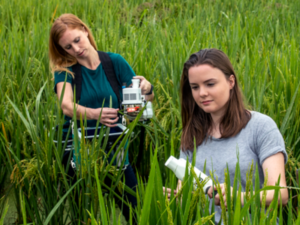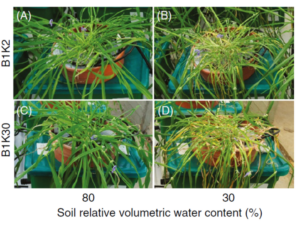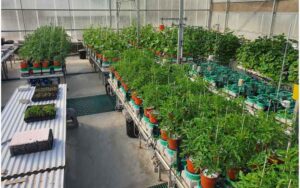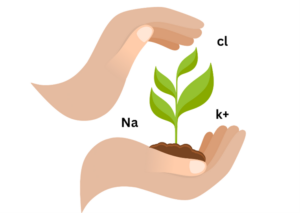What are biostimulants?
Plant biostimulants encompass a broad category of naturally derived or chemically synthesized substances that stimulate plant growth and development by enhancing nutrient availability, hormone regulation, and stress tolerance. They differ from traditional fertilizers, which primarily supply essential nutrients to plants. Instead, biostimulants improve the physiological and metabolic processes of plants, facilitating better nutrient absorption, uptake, and utilization.
What are the various types of biostimulants available?
There are several types of plant biostimulants, each with its unique composition and mode of action. Humic substances, derived from decomposed organic matter, improve soil structure, nutrient retention, and root development. Seaweed extracts, rich in natural growth-promoting compounds like cytokinins, auxins, and betaines, enhance nutrient uptake, root growth, and stress tolerance in plants. Microbial-based biostimulants contain beneficial microorganisms such as plant growth-promoting bacteria and mycorrhizal fungi, which establish symbiotic relationships with plants, improving nutrient availability and disease resistance. Protein hydrolysates, derived from plant or animal sources, stimulate plant growth, photosynthesis, and stress tolerance.
How do plant biostimulants enhance nutrient uptake and absorption?
Plant biostimulants employ a myriad of mechanisms to exert their effects. They bolster nutrient uptake and absorption through the improvement of root development and the activation of specific transport mechanisms. Additionally, it has exerted influence on the rhizosphere microflora, fostering advantageous interactions between plants and soil microbes, which aid in nutrient assimilation.
Moreover, these remarkable formulations regulate the synthesis and distribution of vital plant hormones, including auxins, cytokinins, gibberellins, and abscisic acid, all of which play pivotal roles in the growth, development, and stress response of plants.
These chemicals heighten plants’ capacity to withstand both biotic and abiotic stresses by activating stress-related genes, instigating the synthesis of stress-responsive proteins, and fortifying the plant’s defense mechanisms. Furthermore, they foster root growth and branching, culminating in heightened nutrient and water absorption, while concurrently enhancing soil structure, water-holding capacity, and microbial activity.

The history of using biostimulants
The use of biostimulants in agriculture can be traced back to ancient times, where farmers intuitively recognized the benefits of certain substances in enhancing plant growth and productivity. Although the scientific understanding of biostimulants has evolved significantly in recent decades, their historical use provides valuable insights into their early application.
Historically, farmers observed the positive effects of organic materials, such as manure, compost, and plant residues, on plant growth. These materials were known to improve soil fertility, enhance nutrient availability, and promote vigorous plant growth. Additionally, seaweed and other plant extracts were utilized in coastal regions for their growth-promoting properties. These early practices laid the foundation for the use of biostimulants in agricultural systems.
How has the understanding of biostimulants evolved over time?
With the advent of modern scientific research, the understanding of biostimulants expanded, and their mechanisms of action were elucidated. The development of advanced analytical techniques allowed scientists to identify and isolate specific compounds within these organic materials responsible for stimulating plant growth and development.
In the 20th century, research on biostimulants gained momentum, and their potential in agriculture became more recognized. Scientists began to explore the effects of isolated substances, such as humic acids, seaweed extracts, and microbial-based formulations, on plant physiology. They investigated the role of biostimulants in nutrient uptake, hormonal regulation, stress tolerance, and other plant metabolic processes.

How has the use of biostimulants evolved in commercial agriculture?
As scientific knowledge expanded, biostimulants formulations and applications became more refined. The use of biostimulants started to gain traction in commercial agriculture, with farmers integrating them into their crop management strategies to improve yields, crop quality, and overall plant health.
In recent years, the demand for sustainable and environmentally friendly agricultural practices has further propelled the interest in biostimulants. Their potential to reduce reliance on synthetic inputs, enhance nutrient use efficiency, and promote sustainable farming systems has attracted attention from farmers, researchers, and policymakers alike.
Today, the use of biostimulants continues to grow worldwide. Ongoing research and development efforts aim to refine biostimulants formulations, uncover new active compounds, and further understand their complex interactions with plants and soil. As the agricultural industry seeks more sustainable and efficient solutions, biostimulants are poised to play an increasingly important role in promoting plant growth, crop productivity, and sustainable farming practices
Why biostimulants are better than traditional fertilizers?
Plant biostimulants offer several advantages over traditional chemical fertilizers, making them a preferred choice for many farmers. Here are some reasons why biostimulants are considered better than other chemical fertilizers:
- Enhanced Plant Health and Resilience: Biostimulants improve plant health and resilience by stimulating natural processes within the plant. They enhance nutrient uptake, root development, and hormonal balance, resulting in stronger and more vigorous plants. This, in turn, leads to increased resistance against diseases, pests, and environmental stresses.
- Sustainable and Environmentally Friendly: Biostimulants promote sustainable agricultural practices by reducing the reliance on synthetic chemicals. They work in harmony with natural biological systems, minimizing environmental impact, and preserving soil health. Biostimulants contribute to reducing nutrient runoff and minimizing pollution of water bodies.
- Increased Crop Yield and Quality: Biostimulants have been shown to positively impact crop yield and quality. By improving plant health, nutrient availability, and stress tolerance, biostimulants can enhance overall productivity. They contribute to better crop uniformity, increased yield stability, and improved crop traits such as color, size, and flavor.
- Improved Nutrient Efficiency: Biostimulants optimize nutrient utilization by enhancing nutrient uptake and absorption in plants. They improve the efficiency of nutrient use, reducing wastage and potential environmental contamination. This leads to cost savings for farmers as they can
achieve the desired plant response with lower fertilizer inputs.
How can I measure the effect of bio-stimulants that I developed?
At Plant-Ditech, we are committed to revolutionizing plant growth and maximizing crop performance. Are you looking to unlock the full potential of your biostimulants? Our cutting-edge PlantArray system is the ideal tool to help you harness the power of biostimulants treatments for your plants.

Join the growing community of researchers, agronomists, and innovators who are advancing the field of biostimulants research with the PlantArray system. Experience the power of precise phenotyping and gain valuable insights into the effects of your biostimulants on plant growth, health, and productivity. Let Plant-Ditech and the PlantArray system be your guide on the path to unlocking the true potential of your biostimulants treatments.








